Kadesh 1274 BC. e .: the main battle of the first world war of mankind
In 1317 BC, after the death of his father, Pharaoh Ramses II entered the throne of the Egyptian kingdom, who was then 22-th year. From his first steps he showed himself to be a man of will and purpose. He inherited a power, which was on the way to a new rise, and he saw this and decided to take advantage of it. The successful campaigns of Network I partly restored Egypt’s influence in Asia and strengthened its military strength. And Ramses II considered that the time for the start of new conquests had come. Moreover, he wanted not only to restore the Egyptian state in its former borders, but also to move north further still. But for this it was necessary, first of all, to crush the Hittite state, which at that time became the main center of attraction for all the secret and obvious enemies of Egypt.
Ramses II attacks the Hittites. Figure J. Rava.
And Ramses II began to prepare for war, steadily increasing Egyptian military power. To facilitate the advancement of his land armies along the seashore, Ramses II built on the coastal strip of conquered Phenicia a number of fortified supporting bases. They were located right up to the city of Byblos and were provided with supplies for the troops and were accordingly fortified. In the army actively recruited mercenaries.
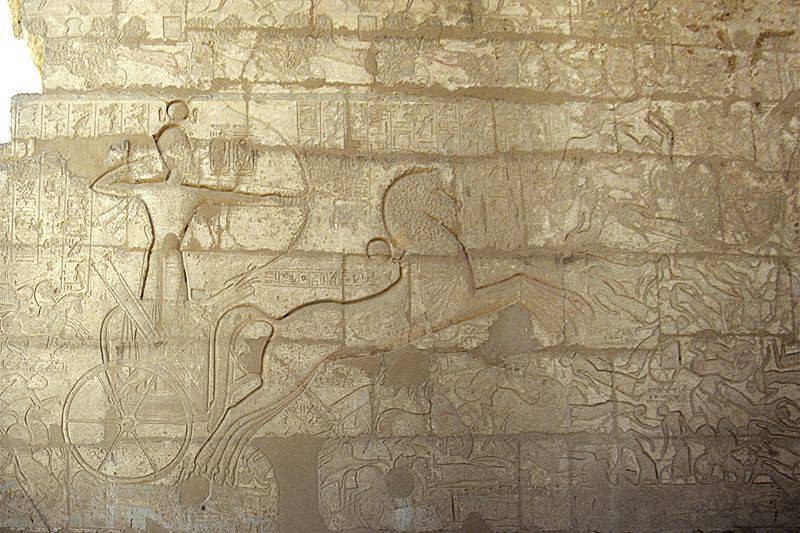
Bas-relief depicting the pharaoh Ramses II at the Battle of Kadesh. Ramesseum, Egypt.
According to Egyptologists, the total number of Egyptian troops who opposed the Hittites, reached 20 000 people - the figure for those times is simply unprecedented. By tradition, the whole army was divided into four large detachments, which were named after the main gods of Egypt - Amon, Ra, Ptah and Seth.
Figures of warriors from the tomb of Nomarch Mesekhti. Middle Kingdom Cairo Museum.
However, the Hittites also did not waste time. Their king Mouvatalli II managed to make a military alliance, which included the kings of Naharina, Arvada, Karhemysh, Kadesh, Ugarit, Aleppo, Asia Minor, and numerous mercenaries whom he recruited among the Mediterranean peoples. The total number of troops of the anti-Egyptian union exceeded 20 000 people. In this case, the main striking force of this army consisted of Hittite war chariots.
Wall bas-relief in the temple in Abu Simbel. Upper Egypt.
Spring 1312 BC The Egyptian army marched from the border town of Charu and then headed north along the beaten track of all the Egyptian conquerors. Reaching the territory of Lebanon, the forces of Ramses II were on the Phoenician coast, where the supply bases were in advance and already on the 29-th day of the march were at the northern ridges of the Lebanese mountains. Below their eyes opened the valley of the river Orontes, and the city of Kadesh was only one day's distance from it.
Order of the “Gold of courage” in the form of three golden flies.
Ramses II crossed the Orontes near the village of Shab-tuna, and, without waiting for the approach of the whole army, he rushed to the city of Kadesh with the detachment of Amon. It is important to note that the units (or armies) of Amon, Ra, Ptah, and Seth moved in such a way that there was a large interval between them. Ramses II with the detachment of Amun was in the forefront, followed by the army of Ra at about two kilometers, then seven kilometers of the army of Ptah, and the army of Seth closed the movement.
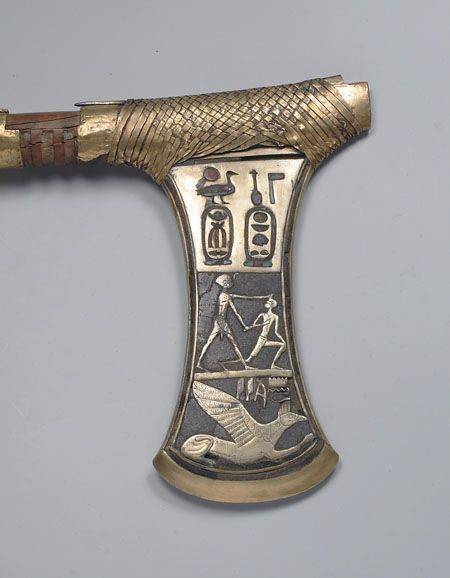
Ax Axhotepa. Metropolitan Museum, New York.
The scouts told Pharaoh that the terrain was free from the enemy, so you can move safely. And then there were two Asian nomad defector who assured Pharaoh that the Hittites, frightened by the Egyptians, had retreated from Kadesh far to the north. Thus, Ramses II got the opportunity to take possession of the city on the move, and he decided to act immediately.
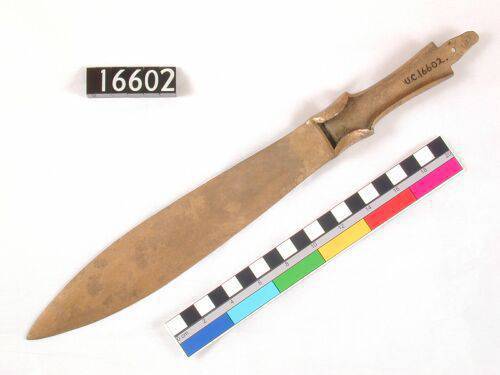
Dagger. New Kingdom (near 1550 - 1050 BC. E.).
But, in fact, everything was, alas, not at all the way it seemed to him! As it turned out later, these defectors were specially sent by the Hittites to mislead the Egyptians, and they succeeded. “The word that these nomads said they told falsely to his majesty, for the defeated prince of the country of the Hittites sent them to look for his majesty, and not to give his majesty's troops to prepare for battle ...” - says the ancient story of the battle under Kadesh, this Hittite cunning was completely successful with the Egyptians. Believing deserters, Pharaoh fell into the trap set for him.
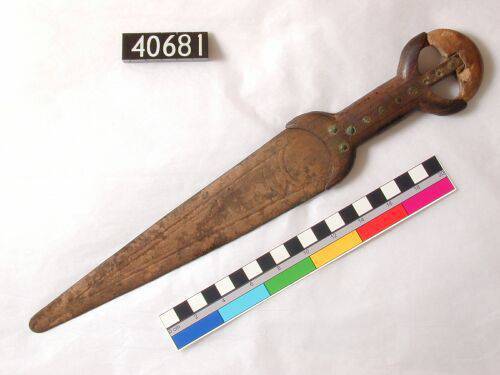
Another dagger of the time.
When Ramses II, already triumphant, with a small vanguard approached Kadesh, while Mouvatalli in the meantime managed to relocate his army unnoticed to the eastern coast of Orontes, went to the rear of the Egyptians and began to prepare for an unexpected strike on them from the flank.
So Ramses II and his whole army of Amon found themselves in a death trap. And if they could still count on the approach of the Ra army, then the rest of the armies, far behind the vanguard, would hardly have managed to rescue their sovereign out of trouble.
Well, Ramses II himself was at this time north-west of Kadesh, and did not even suspect that he was standing in the same place where the Hittite troops had recently been stationed, and that his sworn enemy Mouvatalli was closely following his every step. . The truth, as is often the case, opened by chance, when the Egyptian troops had already settled down to rest, disintegrated bulls and horses, and tired warriors stretched to rest on the ground. They caught the enemy scouts, and those, when they began to beat them with sticks, said that Mouvatalli with all his army was literally at the side of the Egyptians, and was about to attack them.
It is possible that the chariot of Pharaoh Ramses II looked exactly like this. In any case, this was presented by the creators of the film “Pharaoh” (1966), perhaps the most reliable historical film on the subject stories Ancient Egypt.
Pharaoh urgently assembled a military council, where it was decided to immediately send messengers for the backward armies, and quickly bring them to where the troops of Pharaoh were. The situation was so serious that the king’s high dignitary himself left with this assignment.
However, time was lost. While the military council decided what to do, 2500 of the Hittite chariots crossed over to the western coast of Orontes and attacked the army of Ra, which at that time was on the march and simply did not have time to prepare for battle.
Most of the Egyptians, they were able to kill. But many still survived and ran in a panic forward to the camp of Ramses II, leaving behind weapon and equipment. The fact that one of his armies destroyed, Pharaoh learned only when its remnants came to Kadesh. Among the fugitives were two sons of Pharaoh, and he was glad that at least they had survived the slaughter.
Reconstruction of the Egyptian war chariot. Museum of the Remer-Pelizaeus. Lower Saxony, Hildesheim. Germany.
However, the Hittite chariots were already rushing along the heels of the runners and it was necessary to immediately occupy the defense! However, what could be done here when the Egyptians in the camp all mixed up? Only the smallest part of the soldiers from the personal guard of the tsar remained combat-ready, while all the others rushed in panic like sheep. Meanwhile, the Hittite chariots, meanwhile, had already broken into the camp of Amon's army, which only intensified the panic that reigned there. It was possible to escape from death only by escaping from the enemy ring.
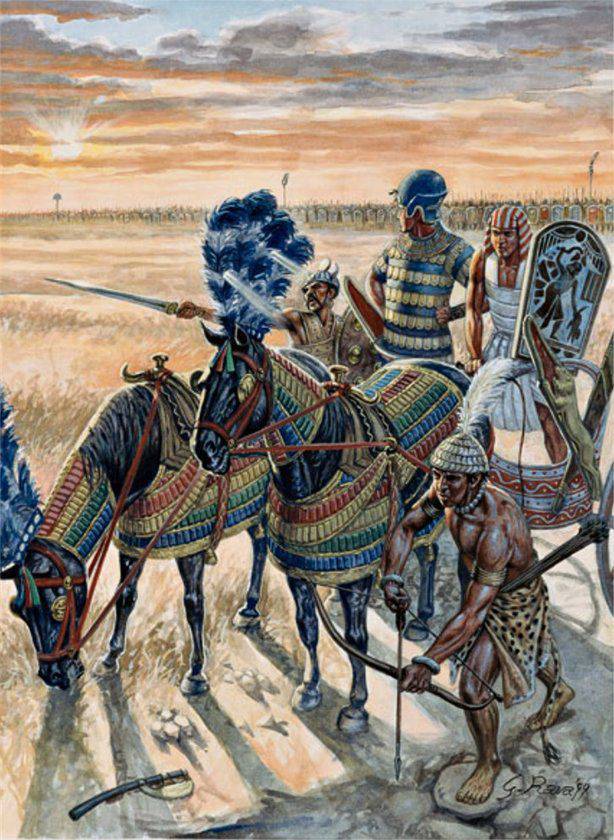
Pharaoh Ramses II at the Battle of Kadesh. Figure J.Rav.
And fortunately for his warriors, and for himself, Ramses II did not lose his head, but jumped onto his battle chariot and, with his bodyguards and sherdan mercenaries, began to make his way south. The attempt failed, as it was there that the enemies turned out to be the most. And then Pharaoh, along with the warriors, turned to the Orontes River, finding the most vulnerable spot with the enemy here.
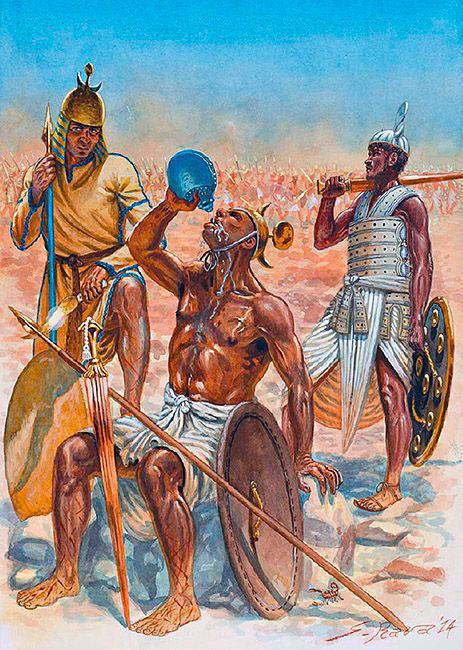
Sherdan mercenaries in the battle of Kadesh. Figure by Giuseppe Rava.
The Egyptians fought with the courage of despair. The strength of their strike, which the Hittites clearly did not expect, was so great that in one place they managed to throw the Hittite warriors into the river. Of course, this success could not have any special significance. He only slightly delayed the death of the Egyptians, which seemed imminent. However, something happened that has already decided the fate of many battles. The Hittites found rich booty in the Egyptian camp. And they came down from their chariots and ... began to hastily collect trophies, instead of finishing the Egyptians! It is clear that they were afraid that others would be ahead of them later. So the Egyptians got some breathing space, and the Hittist impulse began to fade.
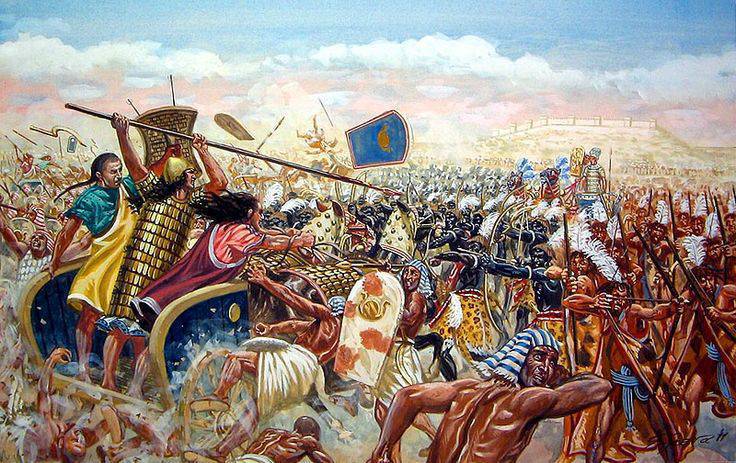
Hittites attack the Egyptians. Figure J. Rava. It should be noted that the Hittite chariots, judging by the images that have come down to us, had three warriors, not two, like the Egyptians. Accordingly, the tactics they had to be different. The Egyptians used chariots as mobile platforms for archers. At first they fired as they rushed forward at the enemy, then made a right turn, and fired at him, rushing past from the left side of the chariot. The Hittites also fought with long spears. And it was not always convenient.
And then Pharaoh came to the aid of a happy accident that dramatically changed the picture of the battle. It so happened that at that time a detachment of Egyptian recruits was moving at no time at a connection with the army of Ramses II from the seashore. They approached the battlefield, saw the difficult situation of Amon's army, and hit the Hittites together, who did not pay attention to anything, but continued to rob the Egyptian camp.
The army of Egyptians is on a breakthrough. A shot from the movie "Pharaoh". That's exactly the way it was then!
Amon's half-defeated army immediately perk up. The fugitives began to return as well, hiding through the bushes and ravines. All this gave Ramses hope that he would be able to hold out until the evening, when, in any case, the army of Ptah would have to come to his aid.
Realizing that victory was slipping from his hands, King Mouvatalli sent 1000 chariots to help his warriors. But now these forces were already not enough to finally break the resistance of the Egyptians.
Egyptian chariots on the go. A shot from the movie "Pharaoh".
Moreover, the accumulation of such a large number of chariots in a relatively small area did not allow them to be used as they should, hindered their mobility, and prevented them from maneuvering. The chariots clung to the wheels with one another and only prevented them from fighting each other. For some reason, Mouvatalli kept his infantry in reserve and did not enter into battle.
The battle went on until the evening, when the long-awaited Ptah army finally approached the Egyptians. Here the Hittites were forced to go on the defensive and, with the onset of night, take cover behind the walls of Kadesh. Well, the outcome of the battle was the mutual exhaustion of forces. Both warring parties suffered serious losses and were severely exhausted. Of course, Kadesha Ramses II never took it, but the Hittites also could not achieve a decisive victory over him.
Returning to Egypt, Pharaoh began to prepare for new battles and campaigns, taking into account the sad experience of the Battle of Kadesh. True, in all official documents this battle was depicted as a great victory for the Egyptians, and was celebrated by court poets and depicted by artists on the walls of temples, he well understood that it was still very, very far from real victory over the Hittites. And indeed it turned out to be so! Only after fifteen years of hard war did he manage to conquer Northern Syria, expel the Hittites from the valley of the Orontes, take the ill-fated Kadesh, and even establish his power over part of Naharina.
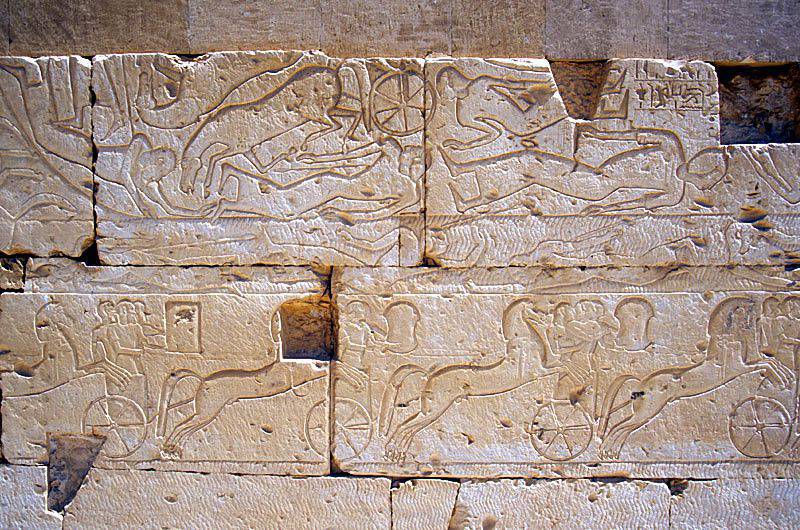
Hittites on chariots. Temple of Ramses II in Abydos.
Now Ramses II was wisely bitter and acted very cautiously. Well, the Hittites had to wage war on several fronts at once. From the south, they were attacked by the Egyptians, but from the north they were overwhelmed by the warlike mountain tribes of Kesh-Kesh. Military assistance was also needed ally Hittites - the state of Mitanni, which at that time fought with Assyria. Yes, and in the Hittite state itself was not very calm. Rebellion broke out even in the Hittite troops, who were tormented by continuous battles. Therefore, barely only King Mouvatalli in 1296 BC on the throne replaced Hattushil, as Ramses II from him immediately followed the proposal for peace. And it was immediately accepted, because the forces of Egypt also dried up.
This is how the oldest of the existing international peace treaties was signed. He was recorded in hieroglyphs for the Egyptians and the Babylonian cuneiform for the Hittites. Clay tiles with a part of the contract are currently stored in the State Hermitage Museum in St. Petersburg.
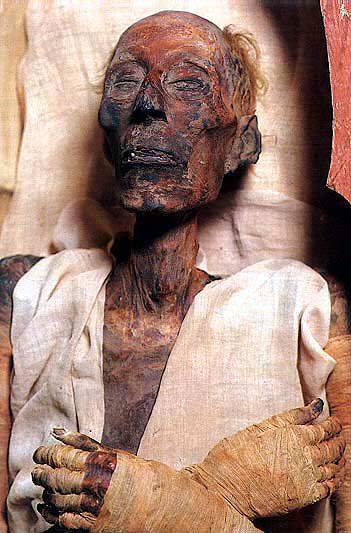
Mummy Ramses II. Cairo, Egyptian Museum.
This document, consisting of 18 paragraphs, is called "a good treaty of peace and fraternity, establishing peace forever." The obligations of both parties under this treaty - not to fight, resolve all disputes peacefully, help each other in case of an attack from the outside, and in the case of revolts of the conquered peoples, and also give out fugitives to each other, sound quite modern.
Well, in order to give the treaty even greater strength, Hattushil subsequently intermarried with Ramses II, who was now called the Great, having given him his daughter.
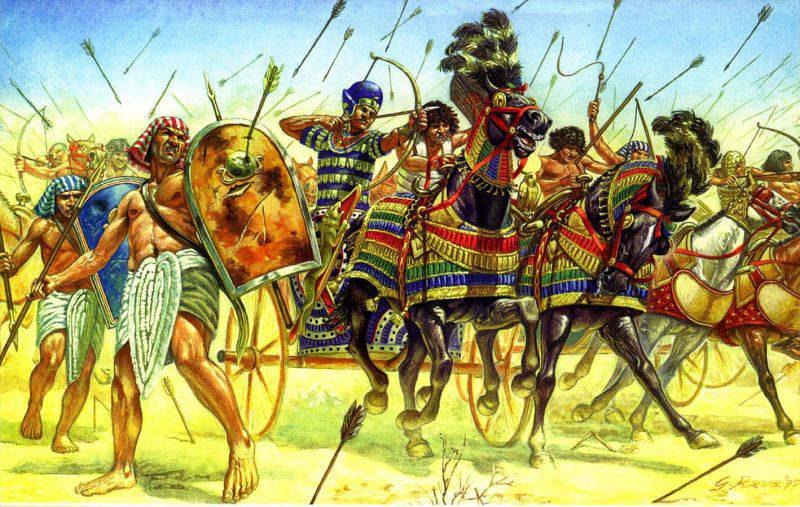
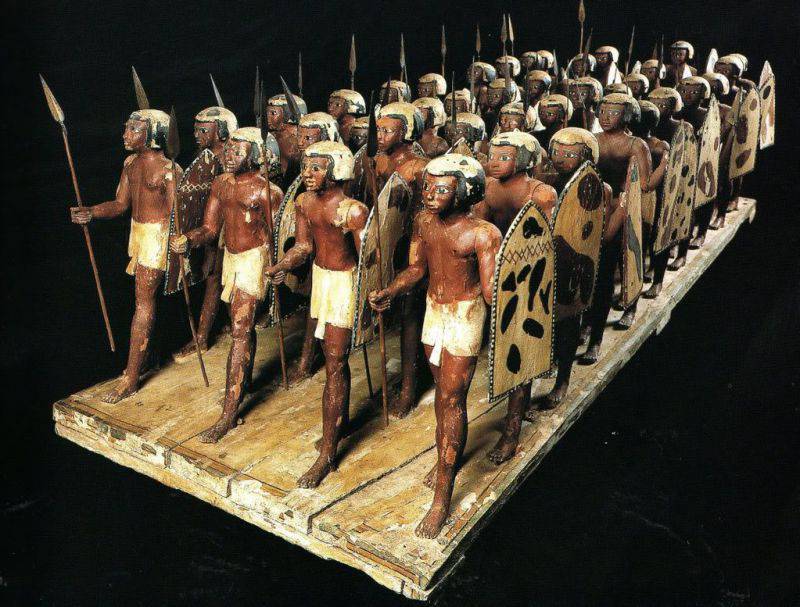
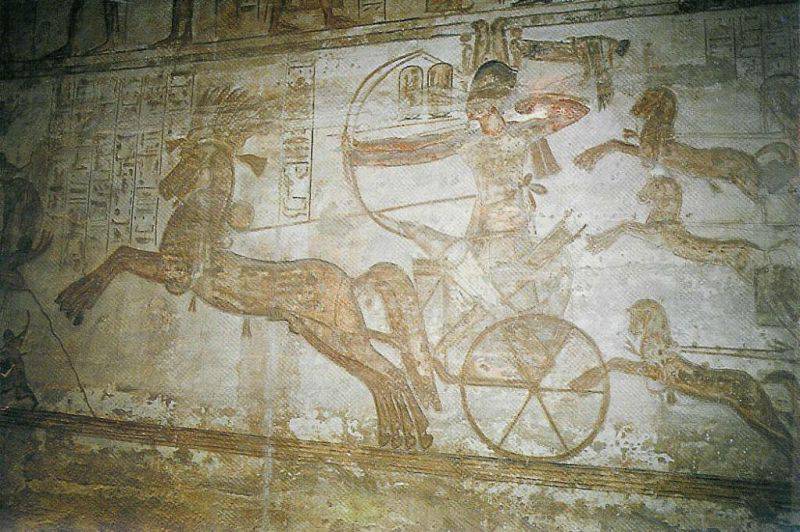
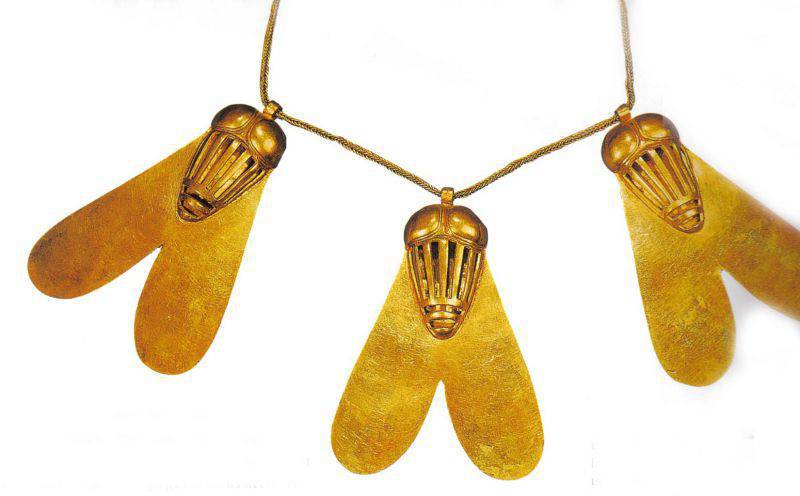
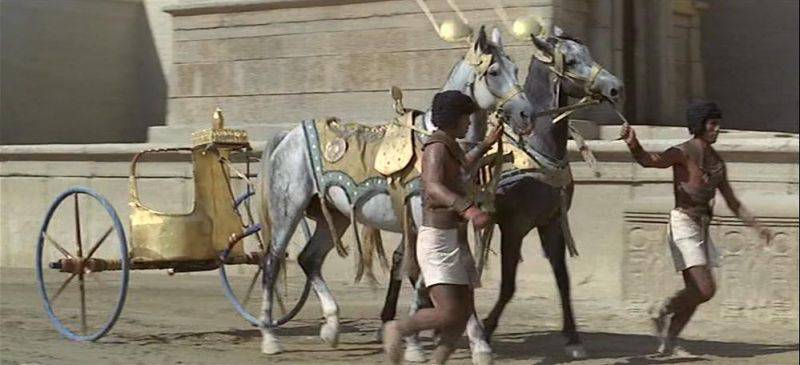
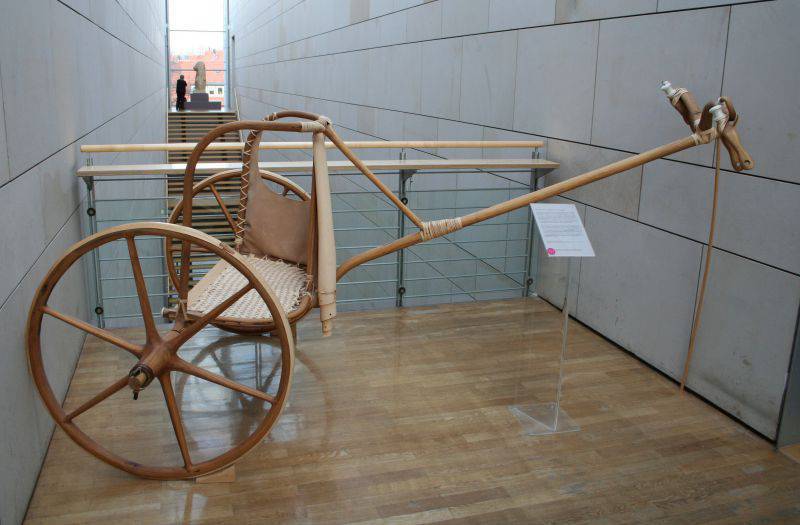
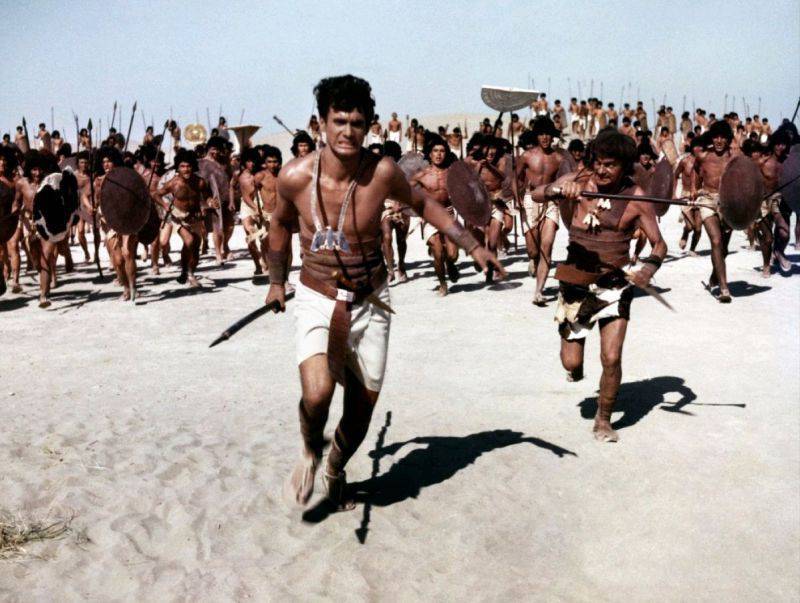
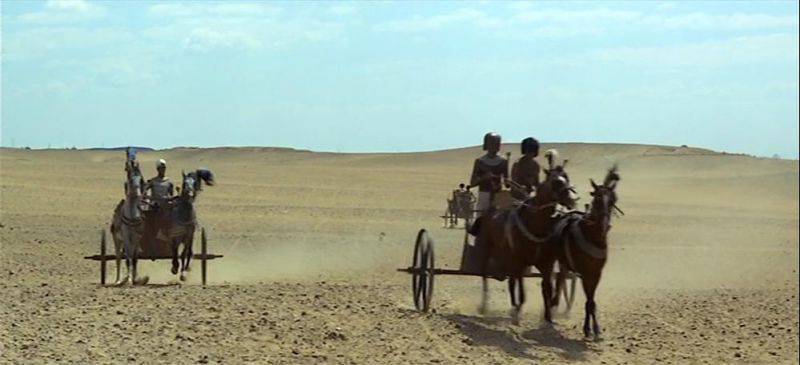
Information